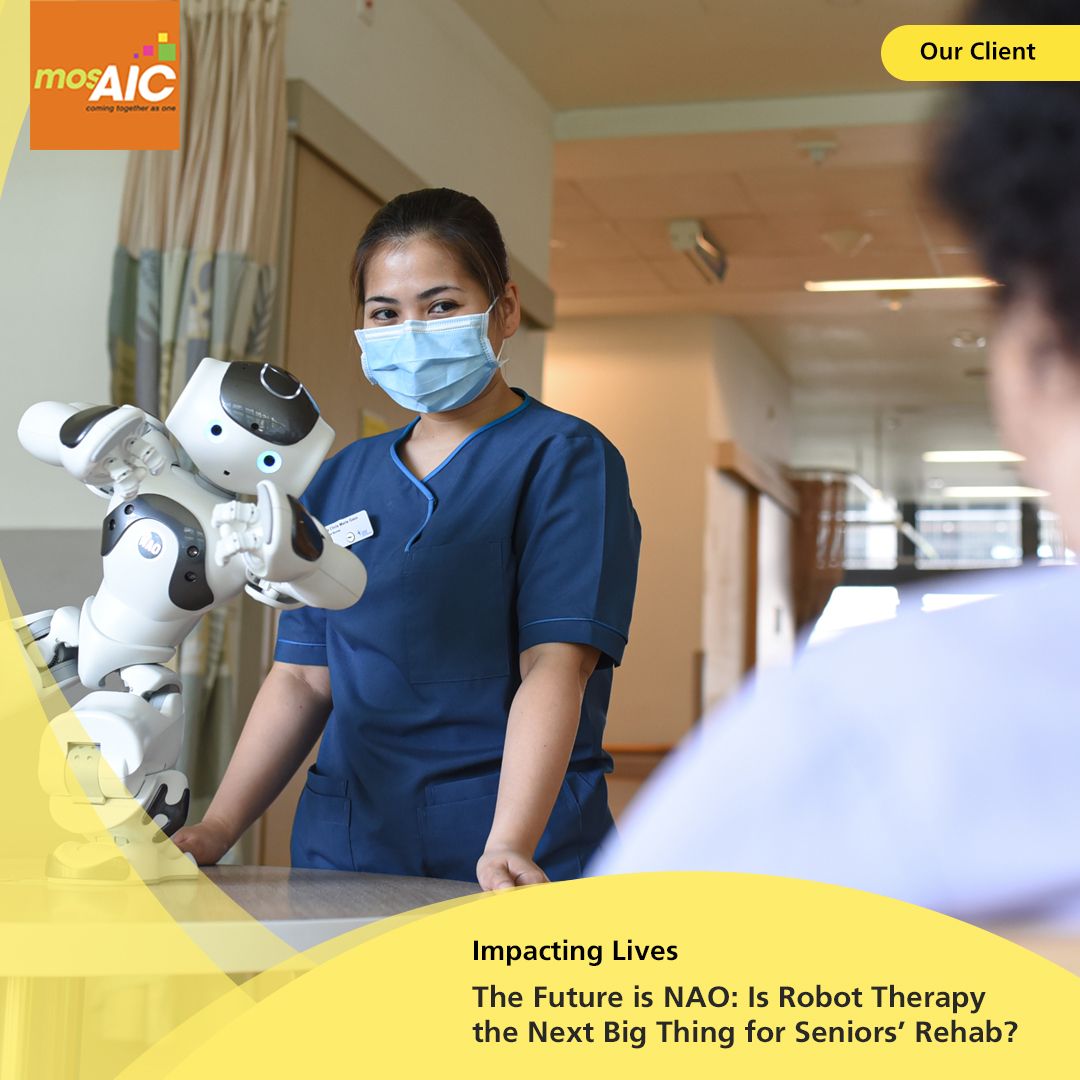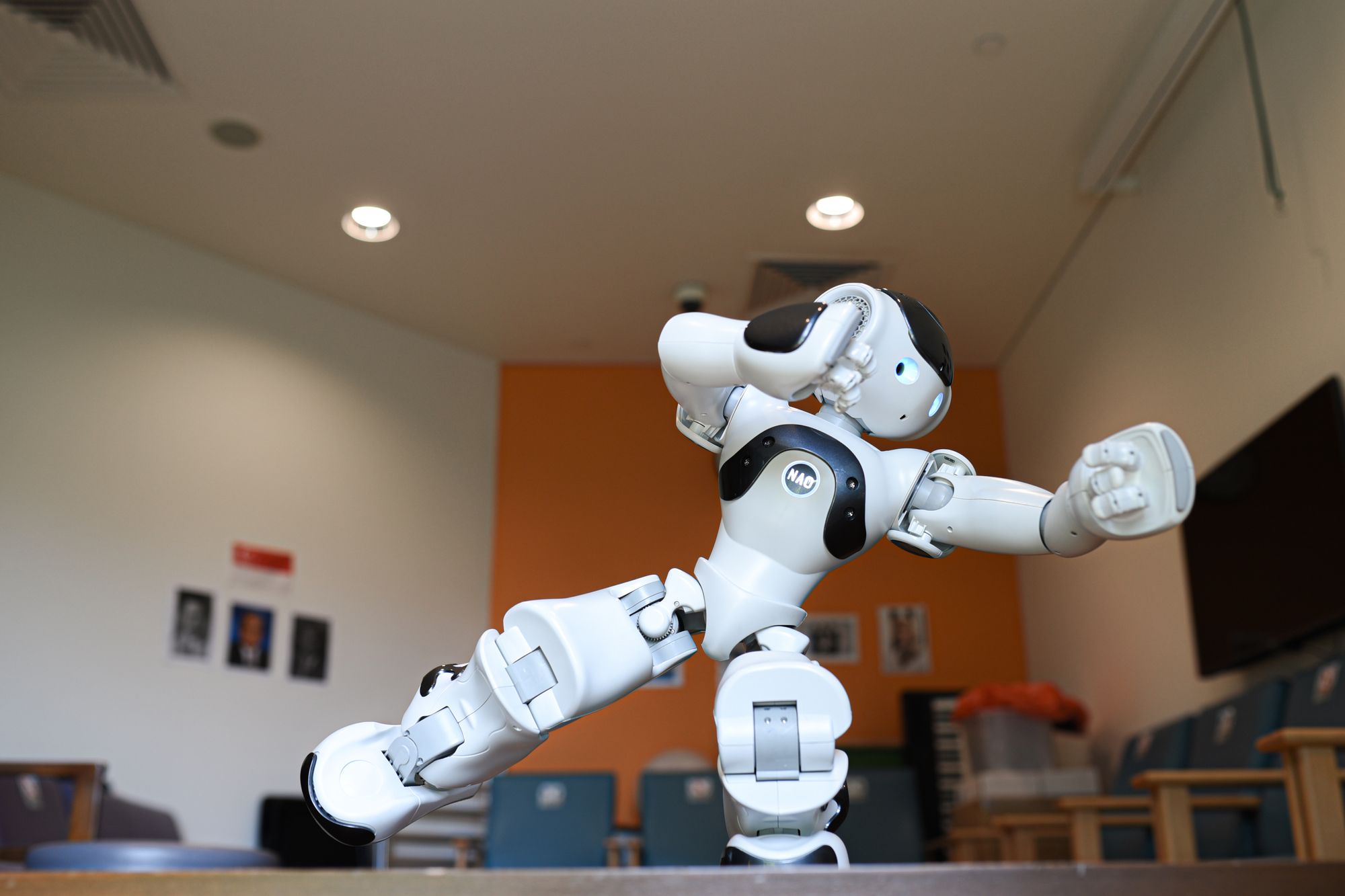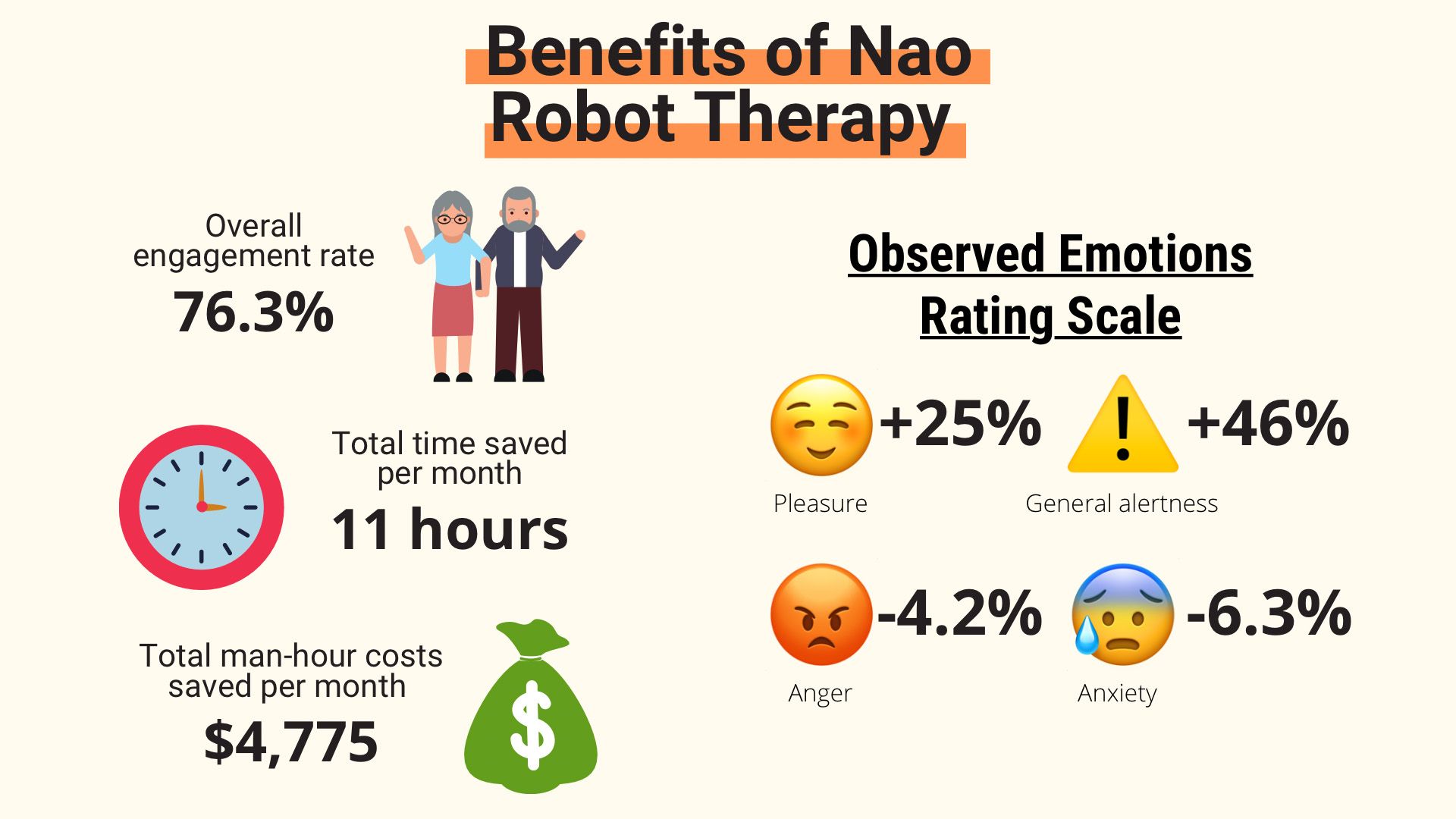The Future is Nao: Is Robot Therapy the Next Big Thing for Seniors’ Rehab?

Our Community Care partners are constantly looking for ways to deliver service excellence and quality care to seniors in Singapore. With the aid of technology, more organisations are now able to improve the lives of seniors in the Community Care sector. In this month’s article, mosAIC explores how our partners are reshaping rehabilitation in our community.
Seniors with dementia can expect to be guided by robots at Yishun Community Hospital (YCH) as part of their recovery therapy. Thanks to a pilot project using Nao robots —initiated by the team at YCH in 2018 — Robot Therapy has become part of the therapy-related services available there.
Conceptualised as a healing space for patients, YCH provides intermediate care for recuperating patients who don’t require the intensive care services of an acute-care hospital. With rehabilitation and therapy being the hospital’s core focus, the team was eager to explore the potential of the new innovation, Robot Therapy.
When the Nursing Administration team at Yishun Health attended a demo session featuring Nao robots, Madam Chua Gek Choo, Director of Nursing at YCH, saw the potential that the technology had to boost patient engagement during therapy sessions. The YCH nursing team then began to look for sources of funding to introduce Robot Therapy at the hospital. They applied for the Healthcare Productivity Fund (HPF), which partially funded the initiative. The project was also submitted for the Community Care Excellence Awards 2020 under the ‘Productivity Improvement’ category, and the team behind the project was conferred the Team Merit Award.
The Future is Nao
Before the introduction of Nao robots in Singapore, a few local nursing homes had already been using Paro, a robot which mimics the appearance, movement and sounds of a baby seal. The use of the therapeutic robot seal is akin to animal therapy, as the robot helps to calm elderly persons who have dementia or a loss of cognitive function.
The Nao robot, however, came with higher expectations — it has a bigger role to play thanks to its additional functions, which include:
- Optic, audio, and impact sensors and motors to help detect surroundings, interpret detection and activate programmed responses
- Ability to express emotions like laughter or sadness during interactions
- Ability to interact and communicate with patients in different languages
The Nao robot can be programmed with various interaction and language modes. The YCH Robot Therapy team used this to their advantage by incorporating the robot into selected therapy sessions.
This increased efficiency allowed nurses to free up nursing time that could then be used for other care activities. In October 2018, Nao robot therapy sessions were trialed with 48 patients from the Dementia ward. This was chosen as the pilot ward as patients with Behavioural and Psychological Symptoms of Dementia (BPSD) tend to require more care and attention.
Through the introduction of the Nao robot, YCH aimed to achieve the following objectives:
- To improve patient engagement and encourage them to participate in social activities
- To reduce the amount of time needed for social activities so care staff would be able to focus on other care activities
The implementation process comprised three phases: training staff, identifying suitable patients, and evaluating the Observed Emotion Rating Scale (associated with the Nao robot implementation) of seniors who underwent the Robot Therapy programme.

Planning for Customised Interactions
In the early stages of the planning phase, the team at YCH worked closely with a Nao robot programmer to customise the robot’s interactions to fit patients' requirements.
The humanoid robot was programmed to communicate in English and Mandarin, perform three sets of neck and upper limbs exercises for physical engagement, and perform a Tai Chi routine for entertainment and interaction purposes.
To evaluate the effectiveness of the Robot Therapy programme, data points were collected before and after the implementation of Nao robot activities. The evaluation began in October 2018 and carried on till February 2019. During this phase, an average of four patients participated during each session, while being supervised by a Registered Nurse. At least four sessions were conducted each month, with each session lasting for about 15 minutes.
The Impact of Nao Robot Therapy
Seniors with dementia or cognitive impairment were found to be better engaged after these group therapy sessions. YCH also noticed positive outcomes based on the Observed Emotions Rating Scale. Here are the overall benefits of Nao Robot Therapy.

All in all, the robot therapy initiative has been well-received by seniors receiving rehabilitative care at YCH. And this is good news for community hospitals such as YCH, where patient engagement in physical and/or social activities is strongly encouraged. Staying physically and mentally active enhances the recovery process and encourages earlier integration back to the community. The success of this project proves that humanoid robots could become a permanent feature in healthcare and community care in the near future.
HPF supports Community Care partners in technology adoption to reduce the time and effort required for manpower-intensive processes. Interested to find out how it can support your productivity initiatives? Visit https://www.aic.sg/for-community-care-partners/funding-support-for-your-organisation/hpf or drop us an e-mail hpf@aic.sg.
More from mosAIC:
Virtual Reality for Seniors: How Lions Home for the Elders is Transforming the Rehab Experience
How A Therapeutic Garden Helps In Dementia Therapy At All Saints Home
What Sree Narayana Mission Nursing Home Does to Reduce Polypharmacy
